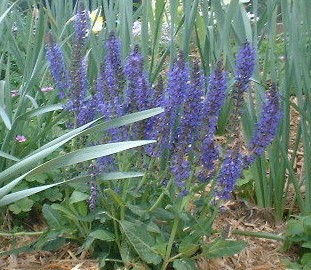|
Gardens Ablaze |
||
|
|
Salvia
|
|
|
Detailed Annual Site Map
Home |
Salvias in the ornamental garden can serve many purposes. They can be used in mass plantings, can add a colorful and decorative touch to Containers, and make excellent cut flowers. Some emit fragrances when brushed or touched, and are good choices to consider when planning for a fragrance garden. Most members of this family attract hummingbirds, bees, and butterflies, and are important parts of an overall Backyard Habitat plan. Salvias make bright additions to dried flower arrangements and potpourris, and depending on the particular cultivar, can be used as edging plants or as tall background screening plants. Salvias are easy to grow, mature fairly rapidly, and are relatively pest and problem free. They prefer full sun and well drained soil, and most are fairly drought tolerant. However, there are some members of this diverse family that will do well in part Shade. Flower colors include red, white, blue, rose, scarlet, violet, and purple. Once established, don't forget to deadhead spent flowers for continuous bloom Propagate Salvias by seed or cuttings taken in the spring before flowering. Root divisions can also be done in the spring, but take care to give the plant good conditions throughout the first summer, as it may be slow to establish a new root system.
Custom Search
|
|
|
Gardens Ablaze |
||
 Salvia
is part of a large family of plants, including the familiar herb,
Salvia
is part of a large family of plants, including the familiar herb,